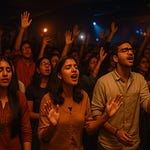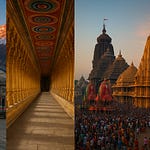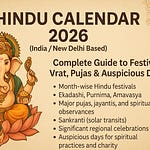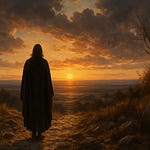Located in the spiritual heart of Braj Bhoomi, the Dwarkadhish Temple in Mathura is a symbol of regal devotion, rich heritage, and divine bliss. Unlike the pastoral charm of Gokul and Vrindavan, here Krishna is not a playful child or lover, but the majestic king of Dwarka — the Dwarkadhish. This article is a complete devotional and historical guide for pilgrims, tourists, and cultural enthusiasts.
📜 Origin & Foundation
Who Built the Temple?
The Dwarkadhish Temple in Mathura was built in 1814 CE by Seth Gokul Das Parikh, a devoted follower of Lord Krishna and a treasurer in the Scindia (Shinde) royal court of Gwalior. He was inspired to construct a grand temple in Mathura to honor Krishna in his kingly form.
Architectural Style
The temple is built in Rajasthani and Mughal architectural style, with intricate carvings, arched gateways, and a grand courtyard that reflects royal elegance. The black marble idol of Dwarkadhish is seated alongside Radharani, who is affectionately referred to as Radhika here.
🕰️ Historical Timeline
The Dwarkadhish Temple stands as a testament to centuries of devotion, heritage, and cultural preservation in the sacred city of Mathura.
In the Ancient Era, Mathura was already revered as the birthplace of Lord Krishna. It held a central place in Indian spirituality and was a vital hub for Vaishnavism, attracting sages, saints, and pilgrims from across the Indian subcontinent.
During the 16th to 17th centuries, the region experienced a spiritual renaissance with the rise of the Bhakti movement. This era saw the construction of many Krishna temples in Mathura and nearby Vrindavan, emphasizing a personal, emotional connection with the deity through poetry, music, and ritual devotion.
In the year 1814 CE, the present Dwarkadhish Temple was built by Seth Gokul Das Parikh, a devout treasurer in the royal Scindia court. Inspired by Krishna’s divine leelas and his majestic Dwarka avatar, he established this temple to portray the Lord as the royal king — Dwarkadhish.
During the tumultuous time of the 1857 Revolt, the temple also served as a cultural and spiritual sanctuary. It played an important role in protecting the Vaishnava traditions of Mathura amidst widespread unrest and upheaval.
From the 20th century to the present day, the temple has grown into a major pilgrimage destination. It is currently maintained by the Vishram Ghat Temple Trust and welcomes lakhs of devotees every year, especially during Janmashtami, Hindola, and Holi, preserving its significance as a living temple and vibrant center of Krishna devotion.
🙏 Rituals & Puja System
Daily Darshan Schedule
The daily rituals at Dwarkadhish Temple, Mathura follow a sacred routine steeped in tradition and devotion, offering devotees a deeply spiritual experience throughout the day.
The day begins early with the Mangala Aarti, performed between 6:30 AM and 7:00 AM, where the Lord is gently awakened from his divine slumber. This is followed by the Shringar ritual from 7:00 AM to 8:30 AM, during which the idol is bathed, dressed in exquisite royal attire, and adorned with ornaments, crowns, and garlands, giving devotees a chance to behold the Lord in his most majestic form.
Later in the morning, from 10:30 AM to 11:00 AM, the Rajbhog Aarti is conducted. This is when the mid-day meal is offered to the deity, accompanied by aarti and devotional chants, signifying the Lord's royal nourishment.
In the afternoon, the temple reopens for the Utthapan ritual from 4:00 PM to 5:00 PM, where the Lord is lovingly awakened after his period of rest.
As the sun begins to set, the temple resonates with bhajans and the fragrance of incense during the Sandhya Aarti, held from 6:30 PM to 7:00 PM. This evening ritual marks the culmination of the day’s darshan and offers a serene and blissful end to the spiritual experience.
Throughout the day, devotees also participate in additional offerings such as Tulsi Archana (sacred basil offering), Abhishek (ritual bathing of the idol), and the chanting of the 108 naam mala jaap, all of which are deeply auspicious and spiritually uplifting.
🎉 Major Festivals Celebrated
1. Janmashtami
The birth of Krishna is celebrated with grandeur, music, midnight abhishek, and traditional “jhulan utsav”.
2. Hindola (Swing Festival)
In Shravan month, the Lord is placed on intricately decorated swings (hindolas) — a symbolic gesture of devotion and intimacy.
3. Radhashtami
Special decorations and shringar of Radhika Ji with white clothes and flowers.
4. Holi and Phool Bangla
Colorful festivities with flower showers, music, and dance.
5. Govardhan Puja
The deity is offered Annakut — a mountain of food representing Govardhan Hill.
🌊 Connection with Tirths & Pilgrimage
The temple is part of the Mathura-Vrindavan parikrama, and is closely linked to Yamuna Ji, Vishram Ghat, and the Gokul Ashtami Circuit.
Many believe that Dwarkadhish here is spiritually connected to the Dwarka temple in Gujarat — symbolizing Krishna's transition from Braj to royal Dwarka.
🛐 Aarti Timings & Temple Schedule
The Dwarkadhish Temple follows a structured daily schedule that changes slightly with the seasons.
During the summer season, the morning aarti begins at 6:30 AM, while the evening aarti takes place at 7:00 PM.
In the winter season, the morning aarti starts a bit later at 7:00 AM, and the evening aarti is performed at 6:30 PM.
Please note: The temple remains closed between 12:00 PM and 4:00 PM every day, during which the deity is believed to be resting. Visitors are advised to plan their darshan accordingly.
🚩 Temple Mysteries & Spiritual Significance
The black marble idol of Dwarkadhish is considered Swayambhu by some devotees (self-manifested).
It is believed that a divine energy connects the Krishna Janmabhoomi, Dwarkadhish Temple, and Vishram Ghat in a spiritual triangle.
Some say Krishna appeared in Seth Gokul Das Parikh’s dream and instructed him to build the temple at this exact location.
The Yamuna darshan from Vishram Ghat, just behind the temple, is believed to wash away sins when done after Dwarkadhish’s darshan.
🚗 Travel Guide – How to Visit
By Train
Nearest Station: Mathura Junction (MTJ) – Just 3 km from the temple.
By Road
Well-connected by road from Delhi, Agra, and Vrindavan.
Public autos, rickshaws, and e-rickshaws available.
By Air
Nearest airport: Agra Airport (~60 km), Delhi Airport (~150 km)
🗺️ What to Do Nearby – Places to Visit
When visiting the Dwarkadhish Temple in Mathura, there are several nearby spiritual and historical places you must include in your itinerary for a complete Braj experience.
Just about 1 kilometer away, you’ll find the Shri Krishna Janmabhoomi, the sacred site believed to be the exact birthplace of Lord Krishna. It is one of the holiest pilgrimage spots for Vaishnavites and holds immense emotional and religious significance.
A mere 500 meters from the temple is the tranquil Vishram Ghat, where it is believed that Krishna rested after killing his tyrannical uncle Kamsa. This ghat on the banks of the Yamuna is not only historically important but also spiritually rejuvenating. In the evening, attend the Yamuna Aarti at 6:30 PM, a mesmerizing ritual of lights, hymns, and floating diyas that creates a divine atmosphere by the river.
About 2 kilometers away lies the Bhuteshwar Mahadev Temple, one of Mathura’s oldest Shiva temples, deeply connected to Krishna's childhood legends and local Braj lore.
If you’re open to a short drive, head about 15 kilometers to Vrindavan, where you can explore the magnificent Rangji Temple, known for its distinct South Indian-style architecture, which stands in contrast to the usual North Indian temple structures.
Also in Vrindavan, around 12 kilometers from Mathura, is the world-famous Banke Bihari Temple, renowned for its unique idol of Krishna and the playful, mysterious nature of darshan here. The curtain between the deity and devotees is frequently drawn and reopened to enhance the divine "leela" feeling.
These locations, collectively, offer a deeply enriching spiritual journey in the land of Krishna’s pastimes.
📿 Devotional Practices
Darshan with Tulsi leaves
Offering Misri and Makhan (butter) to Lord Krishna
Bringing home temple-prasad for family blessings
Listening to Raag Darbari bhajans sung during aarti time
🛍️ Local Shopping
Tulsi malas, Govardhan clay idols, Krishna dress items
Peda from local Mathura sweet shops
Handcrafted brass diyas and religious mementos
Why You Must Visit
Dwarkadhish Temple in Mathura isn’t just a structure of bricks and stone — it is a living energy center where Krishna is not only worshipped but also experienced. From its divine idol to its mystic chants and the glorious Yamuna Aarti, every corner of this temple vibrates with spiritual nectar.
“एक बार अगर द्वारिकाधीश की आँखों में झाँक लिया, तो जीवन भर हृदय में रास रचता रहेगा।”










